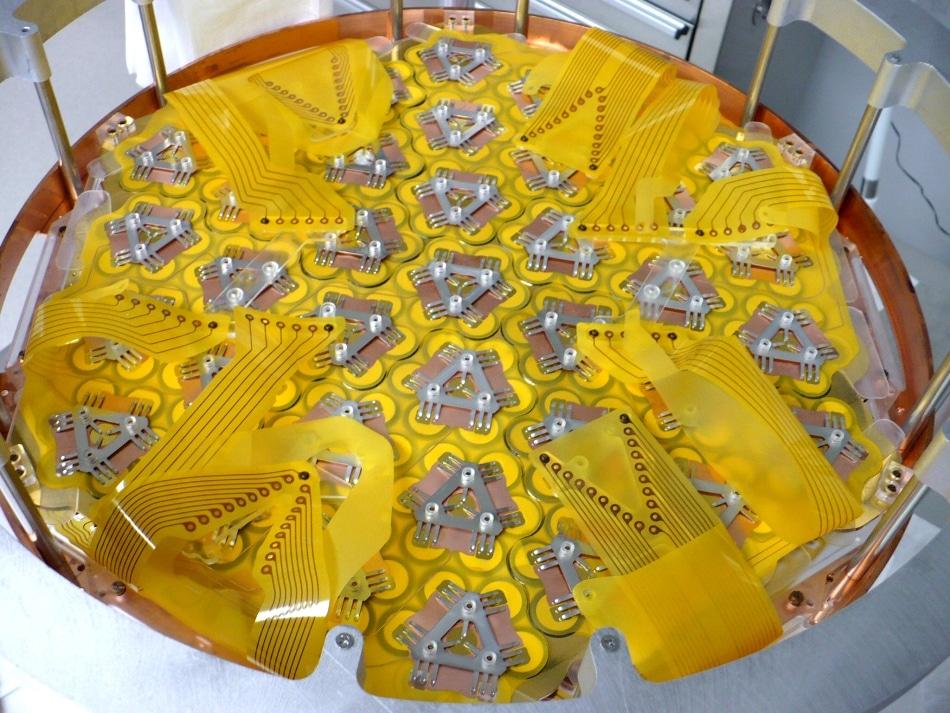Sep 27 2019
A speculative nuclear process called neutrinoless double beta decay must be one of the least possible events to occur in the universe.
 Part of the EXO-200 underground detector, which searched for a hypothetical nuclear decay that could reveal how neutrinos acquire their incredibly small mass. (Image credit: EXO-200 Collaboration)
Part of the EXO-200 underground detector, which searched for a hypothetical nuclear decay that could reveal how neutrinos acquire their incredibly small mass. (Image credit: EXO-200 Collaboration)
At present, the international EXO-200 Collaboration, including scientists from the Department of Energy’s SLAC National Accelerator Laboratory, has established just how improbable it is: Half the nuclei of a specified volume of a particular xenon isotope would need more than 35 trillion trillion years to decay by means of this process—a perpetuity in comparison with the age of the universe, which is “only” 13 billion years old.
In case it is discovered, neutrinoless double beta decay would demonstrate that neutrinos—which are among the highly abundant elementary particles that have extremely small mass—are their own antiparticles. These details would assist scientists to establish the nature of heavy neutrinos and how they acquire their mass.
The decay was not observed during the EXO-200 experiment, but its complete data set, published on the arXiv repository and accepted for publication in Physical Review Letters, gave an account of some of the strongest limits to date for the half-life of the decay and for the mass that could be possessed by the neutrinos.
EXO-200 was carried out at the Waste Isolation Pilot Plant (WIPP) in New Mexico from 2011 to 2018. After the first few months of operations, it found out another strange process: the two-neutrino double beta decay of the same xenon isotope. EXO-200 was a significant precursor for next-generation experiments, for example, the proposed nEXO, which would have a considerably better possibility of finding the neutrinoless decay.
U.S. funding for EXO-200 is offered by the DOE Office of Science and the National Science Foundation. The data analysis was partly carried out using resources of the National Energy Research Scientific Computing Center (NERSC), a DOE Office of Science user facility. The principal investigator of the EXO-200 group at SLAC is Martin Breidenbach.